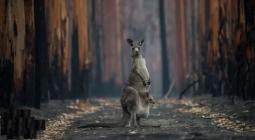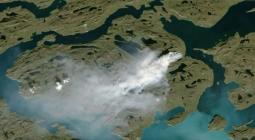'Everything is burning': Argentina's delta fires rage out of control

Cattle ranching and drought have turned the Paraná River grasslands to tinder, threatening disaster for the area’s wildlife
A raging fire described as “completely out of control” is threatening one of South America’s major wetland ecosystems. The fire has been burning for months now, and is visible from the balconies of luxury apartments along the shoreline of the Paraná River in Argentina’s central city of Rosario
Locals have been sharing photos and videos of the fires on social media.
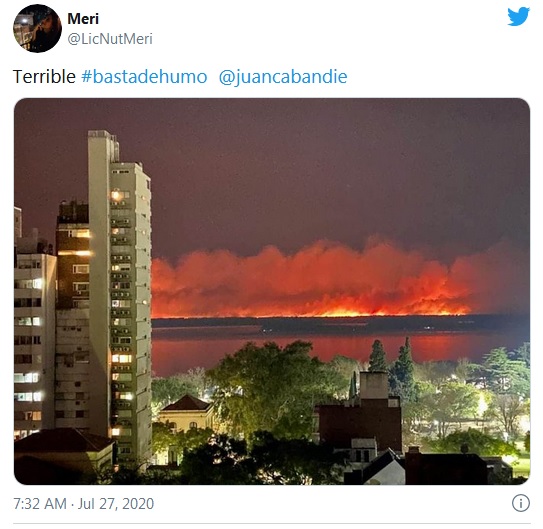
In normal times, Rosario’s riverfront homes enjoy a spectacular view of the seemingly never-ending green grasslands on the opposite bank of the Paraná, a waterway stretching over a mile across as it passes through the city.
In recent months, however, dwellers in the luxury condos have been congregating on their balconies as the wall of red flames from thousands of fires raging through the Paraná delta grasslands rises high into the sky.
“Everything is burning, it’s completely out of control,” Leonel Mingo, a spokesperson for Greenpeace Argentina, told the Guardian. “Once a fire reaches that scale, it becomes virtually impossible to stop.”
The Paraná is South America’s second largest river after the Amazon and the eighth longest river in the world. Its floodplain, known by Rosarinos as “la isla”, is not actually an island, but a vast delta covering some 15,000km2 , through which the Paraná drains towards the Atlantic Ocean 300km away.
The giant delta is clearly visible in satellite imagery as a dark green wedge on the northern margin of the Paraná from Rosario to Buenos Aires.
Giant plumes of smoke from the fires raging since February have at times covered the streets of Rosario and other places along the Paraná with a layer of ash from scorched plants and animals. The air in Rosario has been unbreathable for weeks at a time.
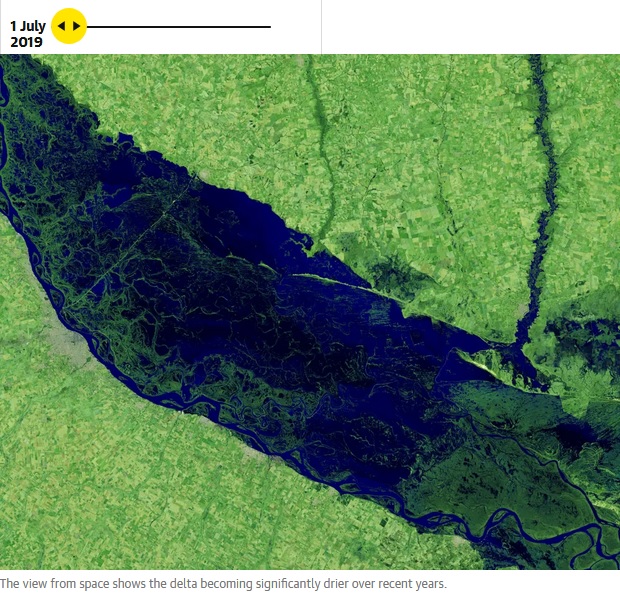
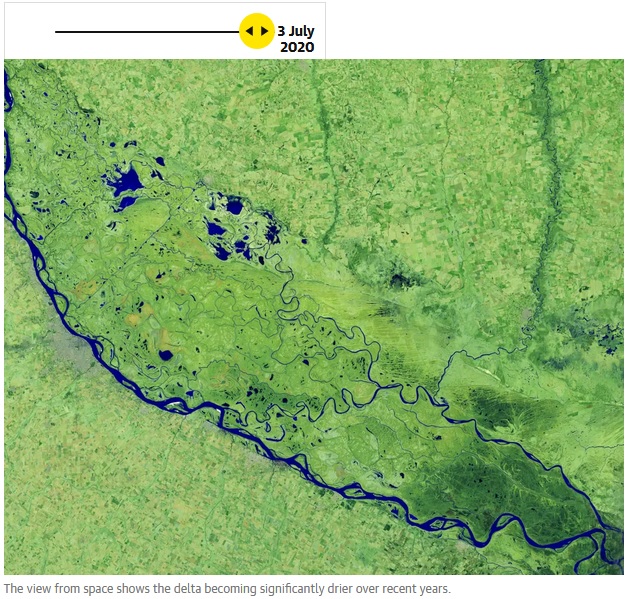
Jorge Liotta, a biologist specialising in the abundant wildlife of the delta, lives with his wife and two young children in the nearby riverside city of San Nicolás de los Arroyos. Their home is just a block from the Paraná’s shoreline.
“The other night I walked to the river and could see seven fires burning in the distance,” Liotta told the Guardian. “It depends on the wind if the smoke hits you, but when it does, the smoke is so thick that the sun turns red and you can barely see the house next door. What’s worse, it gets inside your home. People with asthma and other breathing difficulties are really suffering.”
Far from abating, the number of fires has been rising. Liotta works at the Scasso Natural Science Museum in San Nicolás, where he has been monitoring the delta fires via Nasa satellites. “We’ve identified 8,024 likely fires so far this year, almost half of them this month of July.”
Liotta worked backwards and found the scale of the
calamity was unprecedented. “The average number of yearly satellite-detected hotspots was only 1,800 in 2012–2019. We’re already at over 8,000 and barely halfway through the year.”
Although cattle ranchers, illegal hunters and property developers have encroached on its rich habitat, the Paraná delta still teems with diverse wildlife, all facing a dire challenge to their survival.
Liotta says it breaks his heart to imagine the scale of destruction. “I can’t help thinking about the animals when I see the fires. If we humans are suffering so much, can you imagine what it must be like for the creatures being burned alive?”
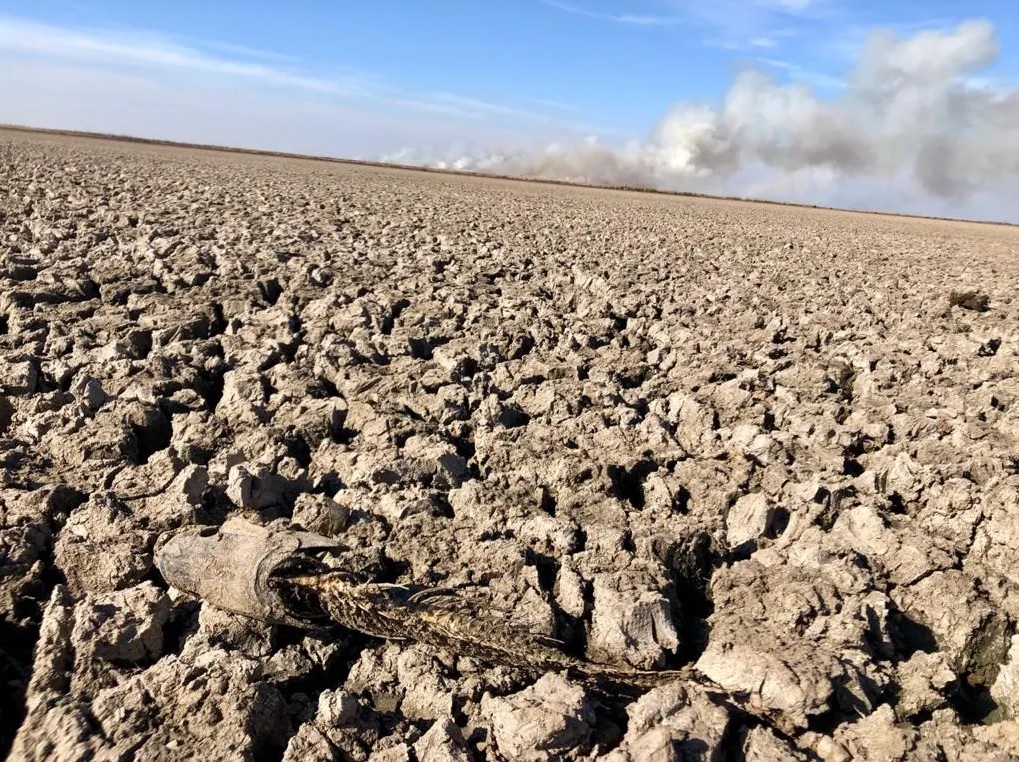
He recites a list of the delta’s species: “There’s the carpincho [capybara], the world’s largest rodent, a relative to the guinea pig, but the size of a farm pig, weighing over 60 kilos, aquatic and highly gregarious. Then the gato montés [wildcat], a solitary hunter at the top of the delta food chain despite being only the size of a domestic cat, either spotted like a leopard or entirely black like a panther. Then there’s an endless variety of birds, invertebrates, mollusks, rare insects, amphibians, reptiles … which must be suffering an incredible mortality rate.”
The coronavirus pandemic has added to the problems, making it impossible for experts to travel to the affected areas. But it has not thwarted cattle ranchers, driven from more productive lands by the growth of soya bean plantations, from sending their cattle to graze on the constantly shifting delta islands.
With hardly any roads or infrastructure, the delta remains a daunting challenge for those without expert knowledge of the region. “You have to get around on horseback or by boat”, says Liotta. “Cattle ranchers ship their livestock to the islands on barcos jaula [cage boats], sometimes two storeys high, that carry around 60 heads of cattle each.”
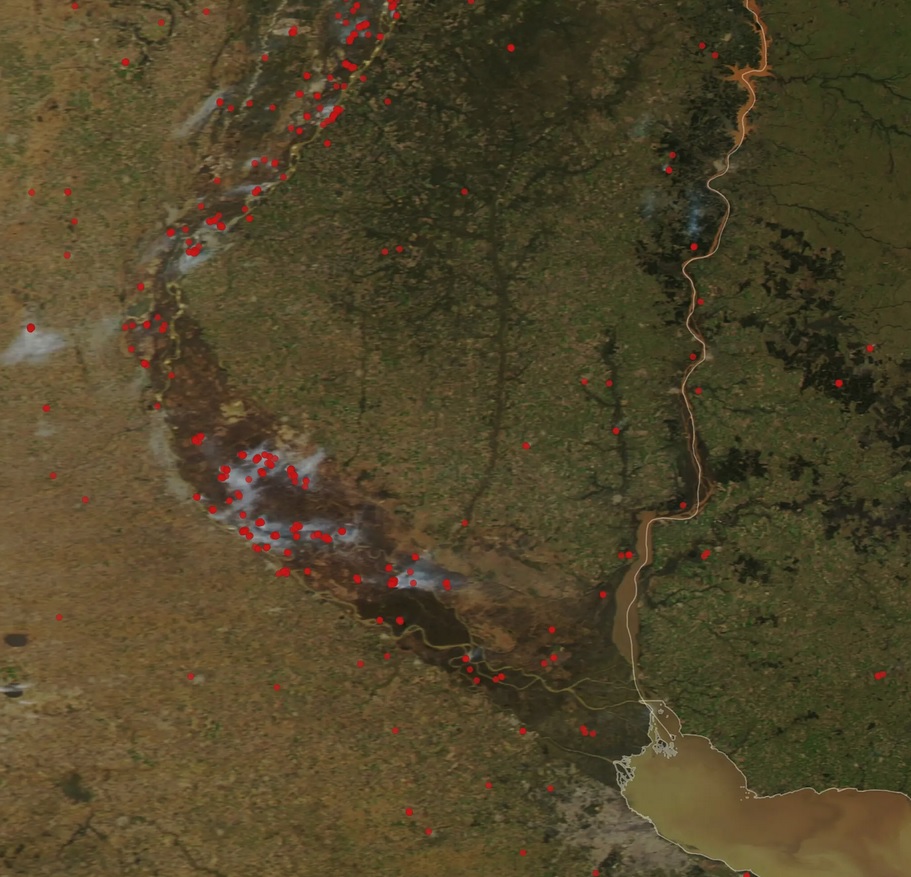
The unregulated expansion of cattle ranching is the main culprit for the expanding fires says Laura Prol, an ecologist from the Rosario-based environmental NGO Taller Ecologista.
“The delta has always been used by livestock farmers to graze their cattle, but the number of cattle grew 500% between between 2000 and 2010,” Prol told the Guardian. “Although that number has dropped some in the last decade, ranchers continue burning the dead winter grass as if they were still in the 19th century, the idea being for the new grass beneath to sprout stronger.”
Prol points to illegal carpincho hunters lighting fires to corral their prey and tourists from Rosario who cross the river to hold barbecues and kayak in the delta as other likely culprits.
“But the real problem is that 2020 has been one of the driest of recent years, which causes two problems. First, without proper humidity the dead grass becomes highly flammable, and second, the low level of the river dries out the canals that usually act as buffers that stop the fire from expanding beyond individual islands,” says Prol.
The environmentalist is also frustrated by the coronavirus pandemic making it almost impossible to see the terrain first hand. “We can’t go, but cattle ranchers, tourists and illegal hunters are still getting there.”
The shocking photos posted on social media, and the sheer extent and duration of the fires, have prodded the authorities into action.
Environment minister Juan Cabandié has opened legal action against alleged culprits, tweeting geolocation maps pinpointing the fires and demanding local judges identify and arrest the landowners. “They must tell us who owns these lands, arrest them and put those responsible on trial.”
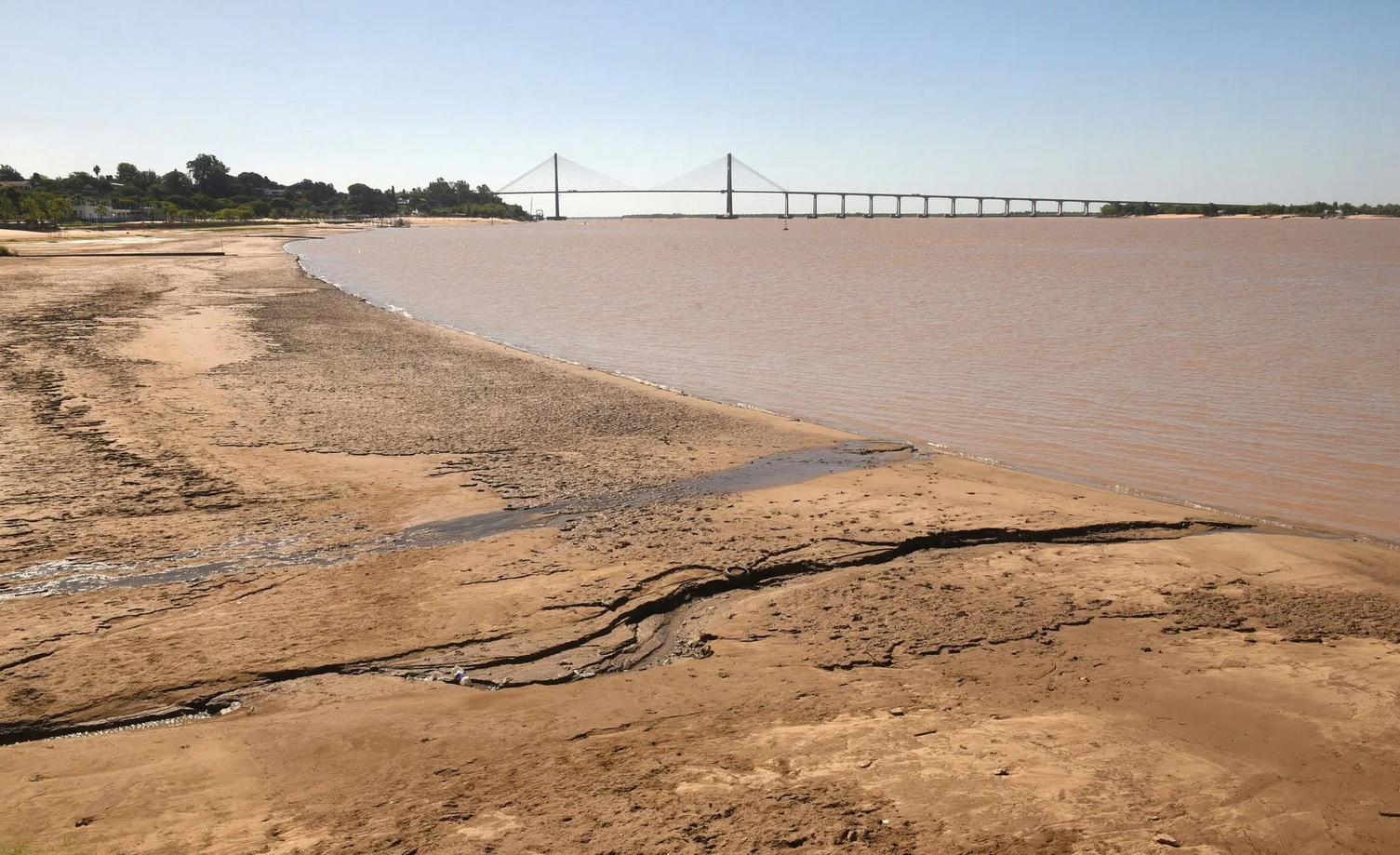
The city of Rosario has also demanded legal action and sent firefighting helicopters to the area.
But environmentalists say more is needed. “Legal action won’t stop the fires. What is needed is a long-term environmental policy to deal with the drop in the level of the river caused by the changing climate and by the El Niño weather phenomenon,” says Prol. “This year’s dry spell might also be an effect of the fires in the Amazon last year, in which a large amount of vapour-producing vegetation that then turned to rain perished. Finding the culprits for this year’s fires is of course important, but we need real environmental protection.”
Mingo of Greenpeace agrees. “We have been lobbying for years for a comprehensive wetlands law. The reason these fires are raging is because there is no legislation. We need to ban cattle farming in the delta. Because right now, with this dry weather, with the drying up of the Paraná river and without a campaign to change the traditional use of fire by cattle ranchers to clear land for pasture, you have the perfect storm.”
Send us your stories and thoughts at animalsfarmed@theguardian.com


